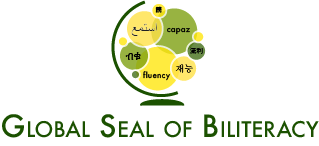Understanding Language Proficiency Levels:
Your Guide to Linguistic Success
Introduction Language proficiency levels are a critical concept for anyone learning a new language or seeking to certify their language skills. Whether you're a student aiming to study abroad, a professional looking to advance your career, or simply a language enthusiast, understanding proficiency levels can help you set goals, track progress, and achieve your linguistic aspirations. In this guide, we'll dive deep into what language proficiency levels are, why they matter, and how you can use them to unlock your full language potential.
What are Language Proficiency Levels? Language proficiency levels are standardized benchmarks that describe a learner's ability to use a language in real-world situations. These levels are determined through a combination of assessments, including reading, writing, speaking, and listening tests. Proficiency levels provide a common language for learners, teachers, and institutions to discuss language skills and set clear expectations.
Knowing your proficiency level can offer numerous benefits. It allows you to:
Set realistic language learning goals
Choose appropriate study materials and courses
Understand your current capabilities and areas for improvement
Communicate your skills effectively to schools, employers, and others
Major Language Proficiency Frameworks There are several widely recognized language proficiency frameworks used around the world. While each framework has its own specific levels and descriptors, they all aim to provide a standardized way to measure and describe language proficiency. The three most prominent frameworks are:
CEFR (Common European Framework of Reference for Languages): This framework is widely used in Europe and beyond. It divides learners into three broad divisions (A, B, and C), each with two levels (e.g., A1, A2).
ACTFL (American Council on the Teaching of Foreign Languages) Proficiency Guidelines: Commonly used in the United States, this framework describes five main proficiency levels: Novice, Intermediate, Advanced, Superior, and Distinguished.
ILR (Interagency Language Roundtable) Scale: This scale is primarily used by the U.S. government. It consists of six levels (0-5), with "plus" levels in between to indicate progression.
Proficiency Level Descriptions
Let's take a closer look at what learners can typically do at each CEFR level:
A1 (Beginner): Can understand and use familiar everyday expressions and basic phrases. Can introduce themselves and ask/answer simple questions.
A2 (Elementary): Can understand sentences and frequently used expressions related to areas of immediate relevance. Can communicate simple, routine tasks.
B1 (Intermediate): Can understand the main points of clear standard input on familiar matters. Can deal with most situations likely to arise while travelling. Can produce simple connected text on familiar topics.
B2 (Upper-Intermediate): Can understand the main ideas of complex text on both concrete and abstract topics. Can interact with a degree of fluency and spontaneity that makes regular interaction possible without strain.
C1 (Advanced): Can understand a wide range of demanding, longer texts, and recognize implicit meaning. Can express ideas fluently and spontaneously without much obvious searching for expressions.
C2 (Proficiency): Can understand with ease virtually everything heard or read. Can express themselves spontaneously, very fluently and precisely, differentiating finer shades of meaning.
To progress from one level to the next, focus on consistent practice across all language skills - reading, writing, speaking, and listening. Set specific goals, immerse yourself in the language as much as possible, and don't be afraid to make mistakes!
The Global Seal of Biliteracy
The Global Seal of Biliteracy and Proficiency Levels The Global Seal of Biliteracy is a prestigious certification that demonstrates your language proficiency to schools, employers, and others. Earned by meeting rigorous academic requirements, the Global Seal corresponds to different proficiency levels depending on the exam and scores achieved.
Holding a Global Seal can open doors to academic and career opportunities around the world, signaling your dedication to language learning and cross-cultural competence. To obtain the seal, you'll need to meet certain language coursework or examination requirements, which vary by level and language.
Preparing for Global Seal certification involves setting clear proficiency goals, engaging in targeted language study and practice, and familiarizing yourself with the exam format and requirements. With diligent effort and the right resources, achieving the Global Seal is a rewarding testament to your language skills.
Importance of Proficiency Levels Beyond Language Learning Language proficiency levels aren't just important for individual learners - they play a key role in academia, business, and government as well. Many schools use proficiency levels to place students into appropriate language courses, award credit, or determine eligibility for certain programs.
In the professional world, language proficiency can be a major asset, opening up global career opportunities. Many employers use proficiency levels to evaluate candidates' language skills and suitability for certain roles, especially those involving international communication or travel.
Understanding proficiency levels can also help you set more meaningful, actionable language learning goals. Rather than simply aiming to "improve", you can target specific proficiency milestones that align with your academic, professional, or personal aspirations.
Language proficiency levels provide a valuable roadmap for your language learning journey, helping you navigate from beginner to master. By understanding what each level entails, you can better assess your current skills, set realistic goals, and make a plan to reach new linguistic heights.
Remember, language learning is a lifelong pursuit. Whether you're just starting out or well on your way, there's always room for growth and improvement. By consistently challenging yourself and using proficiency levels as a guide, you can unlock your full language potential.
If you're ready to take your language skills to the next level and gain formal recognition, consider pursuing Global Seal of Biliteracy certification. With dedication and the right preparation, you can earn a prestigious credential that opens doors and showcases your linguistic accomplishments to the world.
